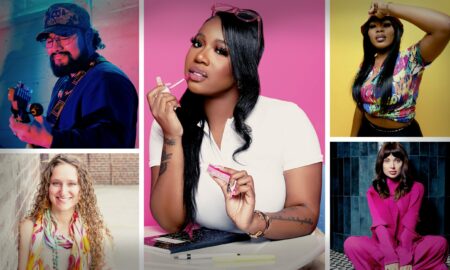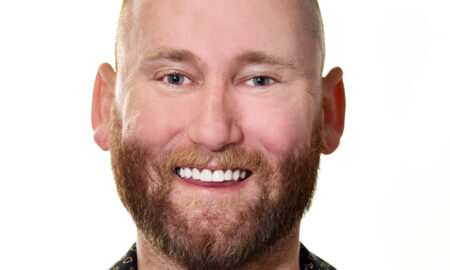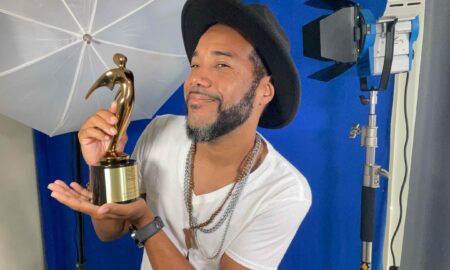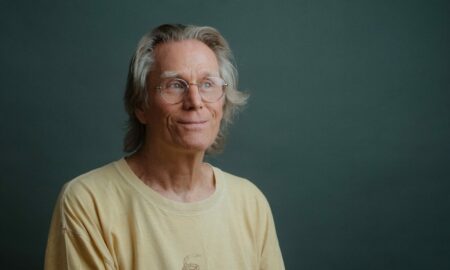

Today we’d like to introduce you to Felice Grodin.
Every artist has a unique story. Can you briefly walk us through yours?
I was born in Bologna, Italy. At the time my father was in medical school studying ophthalmology. Since his courses were in Italian, I always thought how challenging it must have been to study medicine in a foreign language. My parents always traveled, so we moved back to New York, then San Francisco and then South Florida. Because I always liked to draw, I had wanted to be an artist but decided on architecture since it was both a science and an art. I did my undergraduate studies at Tulane University in New Orleans. Immersing myself in that city for five years had a deep effect on me. Both its physicality and culture have an underlying entropy and vulnerability. Experiencing Mardi Gras had both an exhaustive and regenerative quality that I think are the underpinnings of my work. From there I came back to South Florida and settled in South Beach in the early nineties. At the time it was the beginning of its resurgence. It had similar aspects to New Orleans. But with the beach and the ocean, everything was bathed in the brightest sunlight and hidden within the deepest shadows. It was very sensual. These cities were not about fixed places or spaces but rather cracks and fissures of possibility. After living in those two cities, I decided that I would go back to school and focus on ‘anti-architecture’ for my Master’s degree.
I completed a studio in grad school that affected me greatly. It was taught by Leslie Gill and explored the cross-section of Cormac McCarthy’s Blood Meridian, the city of Butte, Montana and in my specific case, Jackson Pollack. There was a mixture of violence, toxic erosion, and Manifest Destiny. Out of the studio, I created a set of notational studies of Pollack’s painting Arabesque. I was trying to see if there were patterns or tendencies – where he might have stepped in and out of the canvas or where he would congeal the paint strokes to create darkness or depth beneath the surface. The tools that I used were standard technical ink pens, Mylar paper, and Gesso, but used in a visceral way. I eventually started to my own paintings, and then drawings of them – cartographies. And so I started to see what was…and eventually what could be. I thus mediate between the inside and outside. Never one or the other because that is what we all do, mediate.
Please tell us about your art.
When I began my practice, I did mostly drawings. Because they were cognitive maps in a sense, I would say that space became both my subject and my medium. I think probably because I studied architecture, but I also believe that worlds are created and are not a priori. If worlds are made, then space and time are negotiable. Therefore, not ‘what is the concept’ but as philosopher Reza Negarestani lays out ‘where is the concept?’ Thus not ‘what is there’ but ‘where is there?’ There is always the mediation and negotiation between local and global notions of ‘where’ but navigating is what interests me. I seek sites and situations that have embedded meanings. I suppose I seek to imprint upon existing conditions.
In other words: I speculatively integrate art by developing strategies for both modeling our present conditions and creating meaningful imprints upon them. I seek existing contexts, conditions or platforms and explore where and how it makes sense to graft or overlay something contingent, something that will reroute the circulation of perception and experience. For example, my first full-scale installation was called A Fabricated Field (2014) and took place in a project room (Locust Projects, Miami). The existing ceiling was constructed out of Dade County Pine, which for the most part has been deforested. I spent a full year constructing the elements of the installation entirely out of off-the-shelf wood in order to accelerate the sensation of logistics, mass production, and consumption. Opening night most visitors were too intimidated to step into the work. They were lined upon the perimeter and leaning against the walls. I had to lead people by the hand into the piece. I don’t know if there was trauma in seeing all that wood expressed like a synthetic cave of stalagmites, or rather it was the excessive and algorithmic compression of time, labor and materials that was somehow…inhuman. It was uncomfortable. Yet I preferred that. It reformed the way I approached the creative process.
What do you think about the conditions for artists today? Has life become easier or harder for artists in recent years? What can cities like ours do to encourage and help art and artists thrive?
Upon reflection, I think that the conditions for artists today are different. It’s not easier versus harder. It’s about pivoting from modernist notions of the myth of the artist (autonomous object maker and truth-provider) to nuanced practitioners. With the circulatory conditions of a network world/s, are many paths that can be taken-simultaneously. One needs to turn the prism from what artist’s mean-to where artist’s go with their practice. What can we map through the circuits of the world, and how can we be open and emancipatory with what we share?
How or where can people see your work? How can people support your work?
Currently, my work can be experienced at the Pérez Art Museum in Miami. Felice Grodin: Invasive Species is a virtually interactive, digital exhibition of commissioned works. The series employs the technology of augmented reality and is accessible to visitors using iOS devices in PAMM’s outdoor areas and in the Padma and Raj Vattikuti Learning Theater on the museum’s first floor. Curator Jennifer Inacio and I developed each of the four works as speculative landscapes that incorporate a new ecology 500 years into the future. Climate change has impacted the museum’s grounds, and many species have mutated and migrated within PAMM’s (non)grounds. The hope is that by using augmented reality, we can simulate world-building and shared experiences through new technology. In this case, what may our future look like? And where are we situated within it? In turn, three out of four of the works can be accessed without entering the museum’s doors since they are large exterior environments. They are open source.
Felice Grodin: Invasive Species is curated by PAMM Assistant Curator Jennifer Inacio, managed by Monica Mesa, and supervised by Christina Boomer Vazquez and IT Director Rafael Sotolongo. The program is made possible by generous funding and mentorship from Knight Foundation. It is activated within the museum’s PAMM App which can be downloaded for free.
Contact Info:
- Address: 245 18th Street #1003
Miami Beach, FL 33139 - Website: felicegrodin.com
- Phone: 786-512-6181
- Email: felicegrodin@gmail.com
- Instagram: @felicegrodin
- Facebook: https://www.facebook.com/felice.grodin





 Image Credit:
Image Credit:
FeliceGrodin_1:
Felice Grodin. A Fabricated Field, 2014. Installation view at Locust Projects, Miami
Photo by Zack Balber, Image courtesy of Locust Projects
FeliceGrodin_2:
Felice Grodin in collaboration with Jennifer Inacio. Field Report [2518], 2019. Augmented Reality. Installation view:
Felice Grodin: Invasive Species, Pérez Art Museum Miami, 2017-19.
Photo by Christian Bonet, Image courtesy of Pérez Art Museum Miami
FeliceGrodin_3:
Felice Grodin. Mezzbug, 2017-18. Augmented Reality. Installation view:
Felice Grodin: Invasive Species, Pérez Art Museum Miami, 2017-19.
Photo by Christian Bonet, Image courtesy of Pérez Art Museum Miami
FeliceGrodin_4:
Felice Grodin. Terrafish, 2017-18. Augmented Reality. Installation view:
Felice Grodin: Invasive Species, Pérez Art Museum Miami, 2017-19.
Photo by Christian Bonet, Image courtesy of Pérez Art Museum Miami
FeliceGrodin_5:
Felice Grodin. Knightquarry, 2017-18. Augmented Reality. Installation view:
Felice Grodin: Invasive Species, Pérez Art Museum Miami, 2017-19.
Photo by Christian Bonet, Image courtesy of Pérez Art Museum Miami
FeliceGrodin_6:
Felice Grodin. Below Sea Level, 2018-2019. Augmented Reality. Digital Model, Still Image:
City Unseen, Produced and Curated by Snap! Orlando, 2017-19.
Image courtesy of the Artist
Getting in touch: VoyageMIA is built on recommendations from the community; it’s how we uncover hidden gems, so if you know someone who deserves recognition please let us know here.

















